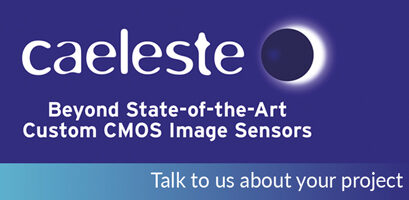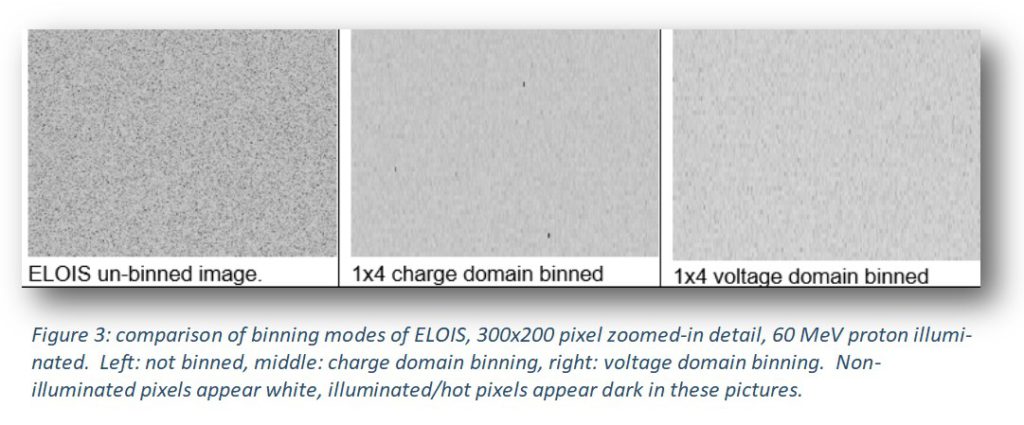At the annual “Space & Scientific CMOS Image Sensors” workhop, Toulouse on November 26th and 27th 2019, Caeleste will present three papers. A fourth paper where Caeleste is co-author is presented by CSEM. The Toulouse workshop is considered as the most prominent space image sensor conference in Europe.
The slides will be made available on this website after the workshop.
1. A rad-hard, global shutter, true HDR, backside illuminated image sensor
by B.Dierickx1, A. Kalgi1, D. Van Aken1, A. Klekachev1, J. Basteleus1, P. Stampoglis1, G. Di Nicolantinio2, F. Palumbi2, A. Pelamatti3 of 1Caeleste, 2LFoundry, and 3Airbus
The ELFIS (ESA contract 4000116089) is the first image sensor that combines following properties: True HDR or “MAF HDR” (Motion Artifact Free High Dynamic Range), IWR Global shutter using GS CMOS technology, BSI (Backside illumination) and TID (total ionizing dose) radiation hard design. It has 1920×1024 pixels on a 15µm pitch. We will describe the design, the measured key performance parameters and show recorded movies demonstrating the high dynamic range (96dB) while operating in IWR global shutter.
See also previous posts: movie and white paper.
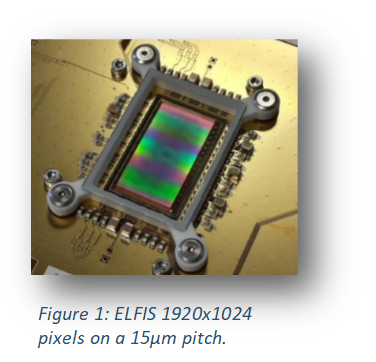
2. Hyperspectral CMOS BSI Image sensor
By Deepraj Gautam1, Qiang Yao1, Dirk van Aken1, Bart Dierickx1, Bert Luyssaert1, Wei Wang1, Dirk Uwaerts1, Koen Liekens1, Gaozhan Cai1, Kyriaki Minoglou2, Arnaud Bourdoux3, Dominique Baudoux3, Vincent Moreau4, Eric Callut5, Julien Nuttin5 of Caeleste (1), ESA (2), (3) Spacebel, (4) AMOS, (5) Deltatec
The “Enhanced Light Offner Image Sensor” (ELOIS) is a 2048 x 256 hyperspectral CMOS BSI image sensor, developed with the support of the European Space Agency. The sensor has a broad spectral range from 400nm to 1000nm. The pixel size is 15.5 x 15.5 µm2. The peak quantum efficiency is 95%. The full well capacity of one pixel can be programmed between 40ke- and 200ke-. Pixels can be 4×1 binned.
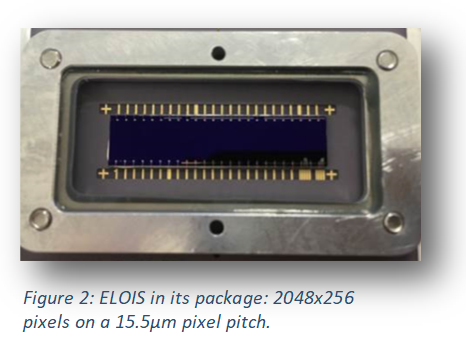
Proton damage resilient pixels
An interesting feature of ELOIS is its “proton resilient” pixel. Groups of 4×1 (sub-)pixels can be binned in two ways. In charge domain binning, floating diffusions are shunted, and the charge is averaged. In voltage domain binning the source follower sources are shunted, acting as analog “maximum operator”.
3. Optimized ASIC Development for Space Large Format NIR/SWIR Detector Array
by Peng Gao, Andrew Keefe, Bart Dierickx, Qiang Yao, Wei Wang, Tim Morlion*, Bert Van Thielen*, Ramses Valvekens* of Caeleste, Mechelen, Belgium and *EASICS, Leuven, Belgium
We describe the design of a universal, radhard, cryogenic, low power, interfacing ASIC for space-based, large format NIR/SWIR detector arrays. This device is designed for 50krad (TID) ionizing radiation and tolerant for SEE. Planned operation temperature is between 35 and 77 Kelvin.
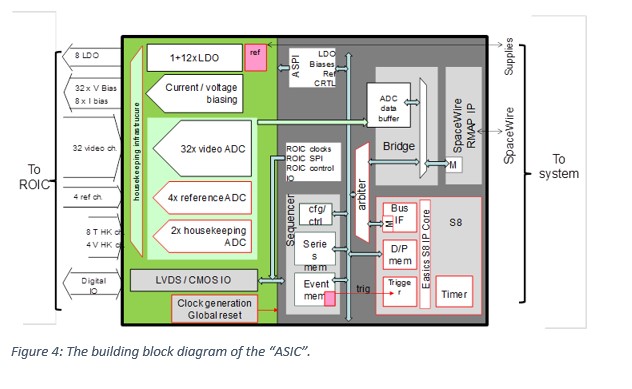
4. Results of microlens testing on back-illuminated sensors for space
by F. Zanella1, G. Basset1, C. Schneider1, A. Luu-Dinh1, I. Marozau2, S. Fricke1, A. Madrigal2, D. Van Aken3, M. Zahir4, of CSEM(1,2) , CAELESTE(3) and ESTEC (4)
CSEM will present a paper reporting an activity one the design, manufacture and test of microlenses on a back thinned CMOS image sensor under space environment conditions. The validation had to address the microlens technology, its design, materials and involved processes. The image sensor employed was the ELOIS, presented in paper no.2, listed above.
